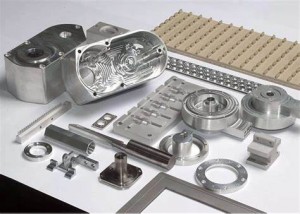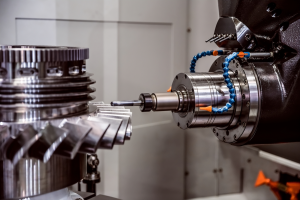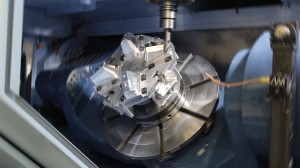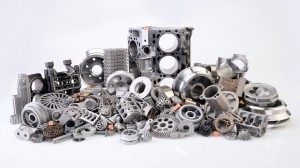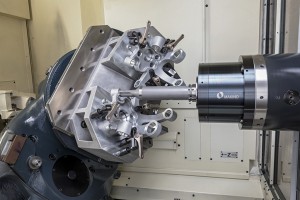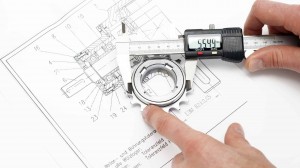As precision custom parts play a pivotal role in the world of CNC machining, understanding the most common geometric shapes is essential for manufacturers and engineers alike. In this comprehensive guide, we will delve into the fundamental aspects of precision custom parts and explore the significance of common shapes in CNC machining. From the importance of precision custom parts to the role of geometric shapes, and from design considerations to advanced machining techniques, this article will equip you with the knowledge needed to leverage standardized geometric forms effectively. Whether you are a seasoned professional or a novice in the field, this article will provide valuable insights into the top 5 most common geometric shapes used in CNC machining for precision custom parts. So, let’s embark on a journey to unravel the secrets behind achieving precision and efficiency in CNC machining through the mastery of common shapes.
1. Understanding the Importance of Precision Custom Parts in CNC Machining:
This section will delve into the critical role that precision custom parts play in CNC machining. It will highlight the significance of these parts in various industries, emphasizing their impact on product quality, performance, and overall manufacturing efficiency. Additionally, it will explore the unique challenges and opportunities associated with producing precision custom parts using CNC machining techniques.
2. Exploring the Role of Geometric Shapes in Precision Custom Parts Manufacturing:
This segment will focus on the fundamental importance of geometric shapes in the manufacturing of precision custom parts. It will discuss how different geometric shapes influence the functionality and manufacturability of parts, and how they contribute to achieving specific design requirements. Furthermore, it will address the relationship between geometric shapes and CNC machining processes, highlighting their impact on manufacturing outcomes.
3. The Top 5 Most Common Geometric Shapes Used in CNC Machining for Precision Custom Parts:
This part will provide a comprehensive overview of the five most common geometric shapes employed in CNC machining for precision custom parts. It will detail the characteristics, applications, and machining considerations for each shape, offering practical insights into their use in manufacturing.
In CNC machining for precision custom parts, several geometric shapes are commonly utilized due to their versatility, manufacturability, and functional properties. This section aims to delve into the top five most prevalent geometric shapes employed in CNC machining, providing a detailed exploration of their characteristics, applications, and machining considerations. By understanding these foundational geometric forms, readers will gain valuable insights into the essential building blocks of precision part production.
- –The first geometric shape to be discussed is the cylindrical form, which is widely used in CNC machining for creating shafts, pins, and other cylindrical components. Its rotational symmetry and uniform cross-section make it ideal for parts requiring rotational motion or structural support. The section will delve into the machining techniques specific to cylindrical shapes, such as turning and drilling, and highlight their applications across various industries, including automotive, aerospace, and medical device manufacturing.
- –Next, the section will explore the ubiquitous nature of prismatic shapes, encompassing cubes, rectangular prisms, and other box-like forms. These shapes find extensive use in CNC machining for producing housings, brackets, and mounting components. The discussion will address the machining considerations for prismatic shapes, such as milling and drilling, and elucidate their role in accommodating internal components and providing structural integrity in precision assemblies.
- –The third geometric shape to be featured is the spherical form, renowned for its use in creating ball bearings, valve components, and articulating joints. The section will delve into the specialized machining techniques required for spherical shapes, including contouring and 5-axis milling, and highlight their applications in enabling smooth, multi-directional movement and load-bearing capabilities in precision mechanisms.
- –Additionally, the section will cover the versatility of conical shapes, which are commonly employed in CNC machining for producing tapered components, tooling inserts, and mating features. It will detail the machining considerations unique to conical shapes, such as taper turning and profiling, and emphasize their role in facilitating self-aligning assemblies, efficient material flow, and enhanced tool performance.
- –Lastly, the section will explore the significance of complex freeform shapes, encompassing non-standard geometries and organic contours. These shapes are increasingly utilized in CNC machining for creating custom components, ergonomic surfaces, and aerodynamic profiles. The discussion will address the specialized machining techniques, such as 5-axis simultaneous machining and surface finishing, required for freeform shapes, and showcase their applications in achieving aesthetic designintent and functional optimization in precision custom parts.
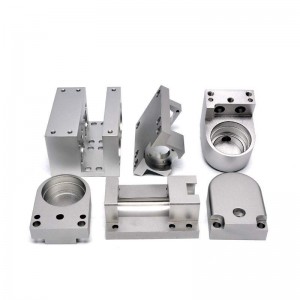
4. Design Considerations for Precision Custom Parts: Leveraging Common Shapes in CNC Machining:
This section will address the design considerations specific to precision custom parts, with a focus on leveraging common geometric shapes in CNC machining. It will explore how designers and engineers can optimize part designs by strategically incorporating standard geometric shapes, thereby enhancing manufacturability, cost-effectiveness, and overall quality. Practical examples and best practices will be included to illustrate effective design strategies.
5. Achieving Optimal Tolerances with Common Geometric Shapes in Precision Custom Parts:
Here, the discussion will center on the critical aspect of achieving optimal tolerances in precision custom parts through the utilization of common geometric shapes in CNC machining. It will explore how specific geometric features and shapes can influence dimensional accuracy, surface finish, and overall part quality. The section will also cover techniques and approaches for ensuring tight tolerances and dimensional precision in manufactured parts.
These detailed explanations aim to provide a comprehensive understanding of the outlined topics, offering valuable insights into the interplay between precision custom parts, geometric shapes, CNC machining, design considerations, and tolerance optimization.
Post time: Feb-01-2024


